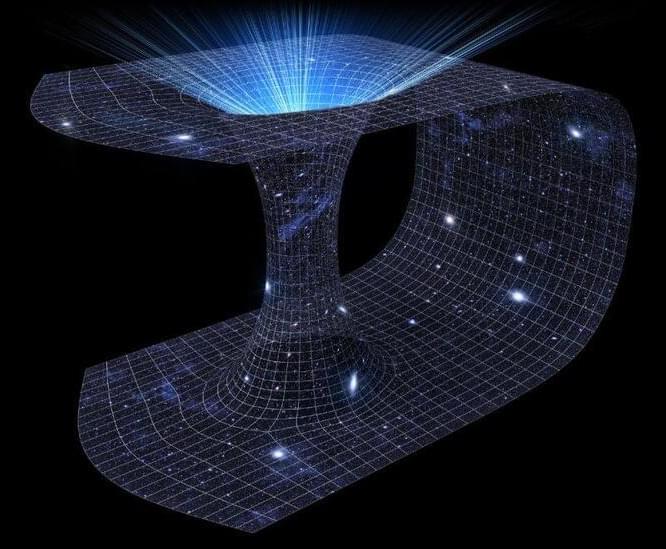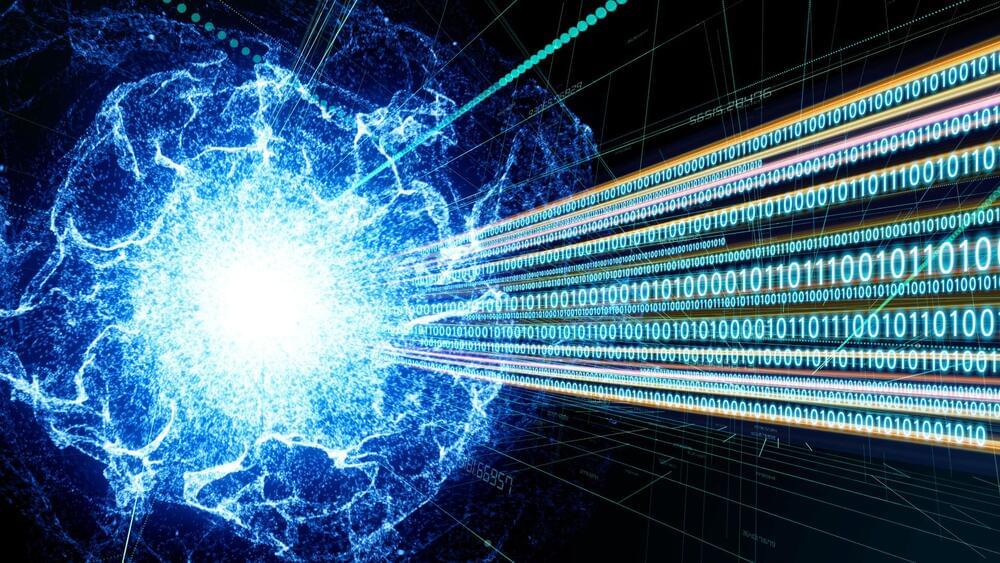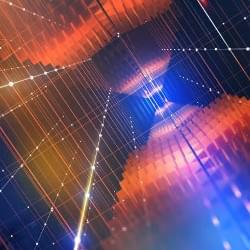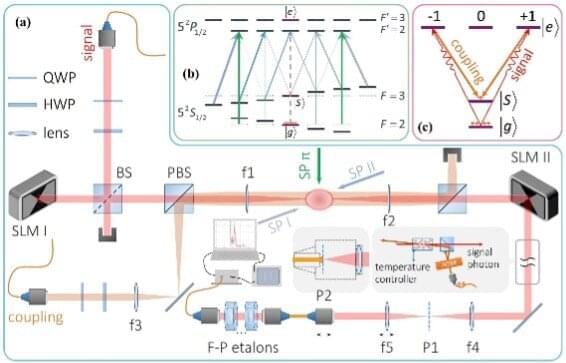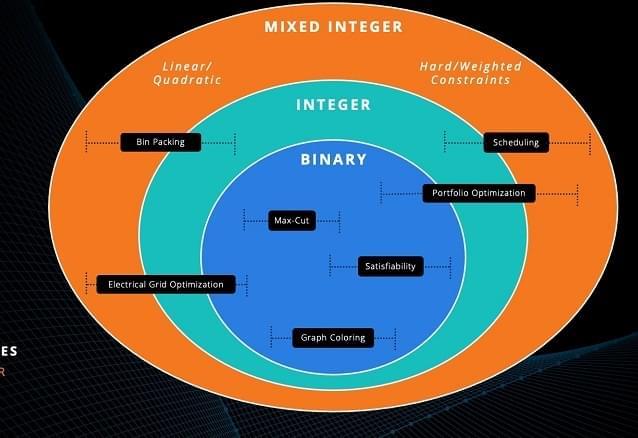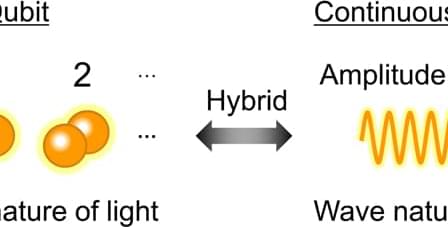The breakthrough could suggest a way to study ‘quantum gravity,’ the missing link between quantum physics and Einstein’s general relativity in the lab.
Category: quantum physics – Page 451
Using modified MRI machines, physicists may have found quantum entanglement between the heart and brain If someone were to (theoretically) throw a wrench at your head, you might be able to catch it just in time to avoid a concussion. But how? Typically, for split-second reactions, we do not consciously decide to catch.
This could help us probe into the lesser-known field of quantum gravity.
A collaborative team of researchers in the U.S. created a holographic wormhole and sent a message through it. This is the first known report of a quantum simulation of a holographic wormhole on a quantum processor.
However, the two theories are fundamentally incompatible and the holographic principle is a guide that can help us combine the two.
Metamorworks/iStock.
Einstein’s theory of general relativity helps us to understand the physical world such as astronomical objects with high energies or matter densities. Quantum mechanics on the other hand, describes matter at atomic and subatomic scales.
A team of quantum engineers at UNSW Sydney has developed a method to reset a quantum computer—that is, to prepare a quantum bit in the ‘0’ state—with very high confidence, as needed for reliable quantum computations. The method is surprisingly simple: it is related to the old concept of ‘Maxwell’s demon’, an omniscient being that can separate a gas into hot and cold by watching the speed of the individual molecules.
“Here we used a much more modern ‘demon’—a fast digital voltmeter—to watch the temperature of an electron drawn at random from a warm pool of electrons. In doing so, we made it much colder than the pool it came from, and this corresponds to a high certainty of it being in the ‘0’ computational state,” says Professor Andrea Morello of UNSW, who led the team.
“Quantum computers are only useful if they can reach the final result with very low probability of errors. And one can have near-perfect quantum operations, but if the calculation started from the wrong code, the final result will be wrong too. Our digital ‘Maxwell’s demon’ gives us a 20x improvement in how accurately we can set the start of the computation.”
Cooling accounts for about 15 percent of global energy consumption. Conventional clear windows allow the sun to heat up interior spaces, which energy-guzzling air-conditioners must then cool down. But what if a window could help cool the room, use no energy and preserve the view?
Tengfei Luo, the Dorini Family Professor of Energy Studies at the University of Notre Dame, and postdoctoral associate Seongmin Kim have devised a transparent coating for windows that does just that (ACS Energy Letters, “High-Performance Transparent Radiative Cooler Designed by Quantum Computing”).
The coating, or transparent radiative cooler (TRC), allows visible light to come in and keeps other heat-producing light out. The researchers estimate that this invention can reduce electric cooling costs by one-third in hot climates compared to conventional glass windows.
Recently, a team led by Prof. Guo Guangcan achieved long-lived storage of high-dimensional orbital angular momentum (OAM) quantum states of photons based on cold atomic ensembles, using a guiding magnetic field combined with clock state preparation. Their work was published in Physical Review Letters.
Previous work has shown that integrating multimode memory into quantum networks can greatly improve channel capacity, which is crucial for long distance quantum communication. The collective enhancement effect of the cold atomic ensemble makes it an efficient medium for storing photonic information. Although important progress has been made, many problems remain to be solved in long-lived spatial multimode memory based on cold atomic ensembles, one of which is how to achieve high fidelity for multimode memory after a long storage time since multiple spatial modes are more easily affected by the surrounding environment.
Based on the degrees of freedom of OAM, the team carried out research on the long-lived storage of high-dimensional multimode quantum states using the cold 85Rb system. In this work, to overcome the effect of inhomogeneous evolution due to the spatial complexity of stored OAM, the team used a guiding magnetic field to dominate atomic evolution and then employed a pair of magnetically insensitive states to suppress the decoherence in the transverse direction. After the clock states were employed, the destructive interference between different Zeeman sublevels was eliminated, which consequently extended the lifetime of faithful storage.
D-Wave Systems, a pioneer in quantum annealing-based computing, today announced significant upgrades to its constrained quadratic model (CQM) hybrid solver that should make it easier to use and able to tackle much larger problems, said the company. The model can now handle optimization problems with up to 1 million variables (including continuous variables) and 100,000 constraints. In addition, D-Wave has introduced a “new [pre-solver] set of fast classical algorithms that reduces the size of the problem and allows for larger models to be submitted to the hybrid solver.”
While talk of using hybrid quantum-classical solutions has intensified recently among the gate-based quantum computer developer community, D-Wave has actively explored hybrid approaches for use with its quantum annealing computers for some time. It introduced a hybrid solver service (HSS) as part its Leap web access portal and Ocean SDK development kit that D-Wave in 2020. The broad hybrid idea is to use classical compute resources where they make sense – for example, GPUs perform matrix multiplication faster – and use quantum resources where they add benefit.
The HHS also relies on familiar tools and helps deal with the nagging challenge of squeezing large practical problems onto, relatively speaking, D-Wave’s small quantum systems. Its systems are massive (Advantage has 2,000 qubits, Advantage2 is expected to have 5,000 qubits) compared with current gate-based quantum computer sizes (IBM is expected to soon debut a 400-plus qubit processor). But quantum annealing is a different beast and works differently. In most ways, the comparison is not at all apples-to-apples.
Year 2019 face_with_colon_three
Photonic quantum computing is one of the leading approaches to universal quantum computation. However, large-scale implementation of photonic quantum computing has been hindered by its intrinsic difficulties, such as probabilistic entangling gates for photonic qubits and lack of scalable ways to build photonic circuits. Here, we discuss how to overcome these limitations by taking advantage of two key ideas which have recently emerged. One is a hybrid qubit-continuous variable approach for realizing a deterministic universal gate set for photonic qubits. The other is the time-domain multiplexing technique to perform arbitrarily large-scale quantum computing without changing the configuration of photonic circuits. These ideas together will enable scalable implementation of universal photonic quantum computers in which hardware-efficient error correcting codes can be incorporated. Furthermore, all-optical implementation of such systems can increase the operational bandwidth beyond terahertz in principle, ultimately enabling large-scale fault-tolerant universal quantum computers with ultrahigh operation frequency.
